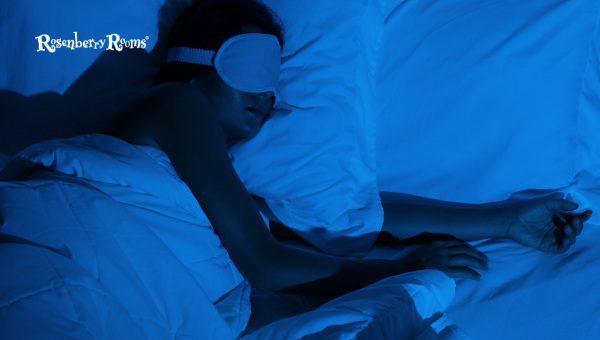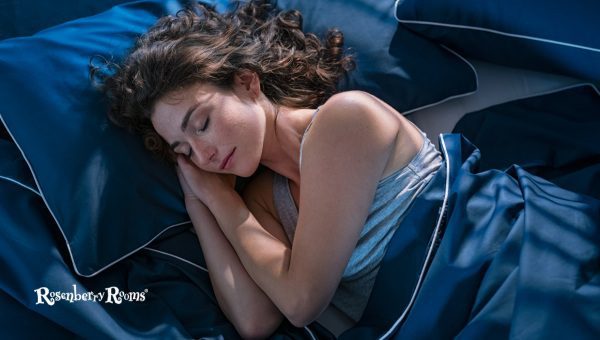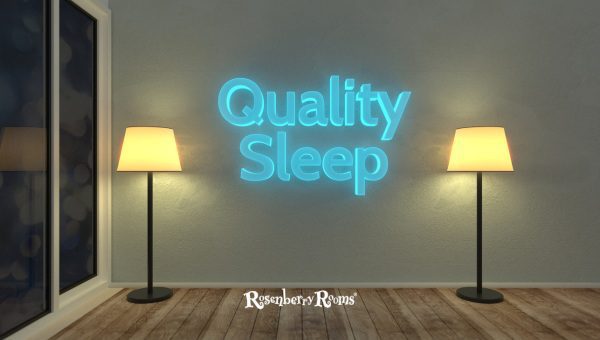Are you struggling with achieving a quality night's sleep? You might have already tried several sleep aids, and yet, elusive rest keeps you wide-eyed at night.
In recent times, scientists have uncovered a surprising yet simple element that influences our ability to sleep- the color of light in our environment.
This piece delves into the fascinating subject of 'What color light helps you sleep?' aiming to provide you with insights that can transform your sleep routine and overall well-being.
Understanding the crucial role light, specifically its colors, plays in your ability to fall asleep can make a significant difference.
It's not rocket science; rather, it's all about your eye's biological sensory response. So please sit back and grab your favorite cup of coffee or tea as we journey into the remarkable world of colored lighting and its impact on sleep.
Contents
Light directly affects sleep by influencing the production of melatonin, a hormone that helps control your sleep-wake cycle.

Exposure to natural light in the daytime helps maintain a healthy sleep-wake cycle. In contrast, exposure to artificial light at night, particularly short-wavelength blue light emitted by electronic devices, can suppress melatonin production and make it harder for you to fall asleep.
Reducing exposure to electronic devices before bed, using dim red lights for night lights, and making sure you get sufficient natural light during the day can all help improve your sleep.
When it comes to inducing sleep, red light takes the crown. Numerous studies have demonstrated that red wavelengths of light are the most conducive to better sleep.
Unlike other colors that can mess with your body's internal clock, also known as your circadian rhythm, red light has almost zero impact.
It has a low color temperature, which means less strain on your tired eyes. So, if you're tackling sleep issues or wish to create an optimal sleep environment, consider switching your typical night lights for something redder.
These scarlet hues can conjure up a tranquil ambiance and welcome the Sandman faster than you can imagine.
Red light falls on the opposite end of the visible light spectrum from blue light. It has a longer wavelength and lower energy compared to other colors. This characteristic means it's less likely to interfere with your sleep cycle.
But what places red lights head and shoulders above the rest isn't just its mild nature. The key lies in how it influences your body's production of melatonin, a crucial hormone that regulates your sleep-wake cycle.
Multiple studies have shown that exposure to red light at night helps increase melatonin production in the body.
High levels of melatonin signal your body that it's time to relax and go to bed. By harnessing the power of red lighting, you're supporting your body's natural secretion of melatonin, thereby facilitating better sleep.
The combination of less disruptive energy output and a positive impact on melatonin levels solidifies red light as a strong sleep aid.
Not only can it create a warm, cozy environment perfect for winding down, but it also actively works with your biology to cue sleepy time.
So, if you're thinking about swapping out your usual bulbs for something more nocturnally-friendly, picking up some red lights might be an excellent solution.
Also Read: Is It Safe To Sleep With AirPods? 2025 [Cause Ear Infection?]
Aside from the well-documented effects of red light on sleep, other color hues can also stimulate a favorable sleep environment.

In this vein, our focus narrows down to the impact of yellow and orange lights. These warm colors, though not as widely recognized, possess their unique sleep-enhancing properties.
Yellow light has an intriguing role when it comes to easing into the realm of slumber. Its effects on the brain stimulate a calming sensation, reducing stress and anxiety levels that often pose as sleep barriers.
This effect further aids in muscle relaxation and mood enhancement, setting you up for a serene night's rest.
Studies indicate that exposure to yellow light helps balance our circadian rhythms, our body's internal clock that regulates sleep and wake cycles. This balance is crucial for maintaining healthy sleep patterns and ensuring high-quality rest.
On the other hand, orange light mimics dusk's calming hues, a signal interpreted by your brain to begin winding down for the day.
When this color graces your environment, it is like Mother Nature whispering to your senses that it’s time for relaxation and restoration.
Also known as Amber light, orange light aligns closely with red on the spectrum, sharing many similar benefits like stimulating melatonin production, the hormone responsible for inducing sleepiness.
Orange lighting does not interfere with nighttime vision; instead, it supports vision acuity in dim lighting conditions, an attribute traced back to our ancestral days around firelight at night, making it even less disruptive to your pre-sleep routine.
If you're having sleep issues, the culprit might just be lurking right in front of you (or in your hands). Yes, we're talking about colors of light that can actually disrupt your sleep.
Ever wondered why you often hear advice against using electronic devices before bedtime? The answer lies in the blue light they emit.
Studies suggest that among various colors, blue light can be particularly harmful by disrupting our natural sleep rhythm, also known as circadian rhythm.
Your body has an amazing internal clock that's tuned into the cycles of day and night. During the night, it produces a hormone called melatonin, which signals your body that it’s time to sleep.
But here's where the trouble starts: blue light messes with this process by tricking your brain into thinking that it's still daytime.
Exposure to blue light from sources like smartphones, laptops, or even LED lights can suppress melatonin production, leading to difficulty falling asleep or staying asleep.
A study published in the journal 'Endocrine Reviews and Metabolic Disorders' found a strong correlation between exposure to blue light from electronic devices and disrupted sleep patterns.
In other words – late-night TV binges or scrolling through social media feeds could be costing you precious hours of restorative sleep.
Coming onto the green light, it’s a bit more complicated than being classified as disruptive or non-disruptive for your slumber.
While it doesn't pack as much punch as blue when it comes to disrupting our sleep-wake cycle, green light is quite prevalent around us. Think digital clocks, signal lights on electronic devices, or certain types of night lamps.
Interesting research from Oxford University suggests that green light actually promotes rapid sleep onset quicker than any other color.
But don't let this lull you into thinking that Green's a complete saint. It all goes down to the intensity and duration of exposure.
Short stints of green light exposure can kickstart your sleep process, but prolonged exposure might still lead to restlessness or difficulty in falling asleep.
If it's emitted from screens, the likelihood of glare and eye strain increases, which is not something you'd want before heading to bed!
As ever with sleep hygiene, the key is moderation and balance. Using light tactfully can help create the optimal environment for your rest and recovery.
Read More: Molblly Mattress Review 2025 [Experience The Best Sleep Ever]
While a good night's sleep might seem elusive, there are numerous tangible steps to take towards better rest.

The focus shouldn't be just on the amount of sleep you get but the quality as well. By instilling certain habits and routines, you can strategically design an environment and lifestyle conducive to a good night's rest.
Incorporating these strategies into your routine could pave the path for consistently better sleep and, hence, enhanced daily functioning.
Nothing happens overnight (pun intended); adversity is part of the process. So be patient with yourself, stay persistent, and soon enough, you're bound to feel the difference.
Explore More: 14 Best Floor Mattress For Peaceful Sleep In 2025 [Top Picks]
Could the secret to a good night's sleep be as simple as changing your light bulbs? Our environment, specifically the light color we're exposed to, can significantly influence our sleep.
The right calming light colors don't just set the mood; they actually deliver tangible benefits that improve our sleep and overall well-being.
By consciously choosing calming light colors for your bedtime routine, not only are you catering to your body's biological responses but also setting up an environment conducive to a good night's rest.
Explore More: 6 Best Pillows for Vertigo To Reduce Your Dizziness In 2025
Red light encourages melatonin production, our sleep hormone, which helps us transition into restful sleep easily.
Exposure to blue light decreases melatonin production and interferes with our circadian rhythm, making it harder to fall asleep.
Yes, a growing body of research shows a strong link between the color spectrum of light and its impact on our restfulness and overall sleep cycle.
While having calming lights can enhance your environment's ambiance, improving your sleeping habits requires attention to various factors like diet, screen time, and exercise routine.
Although certain colors can aid in relaxation and stress relief anytime within 24 hours, the specific influence of colored lights on inducing sleep is most beneficial during the nighttime.
In the pursuit of perfect sleep, the power of light color should not be underestimated. It's remarkable how color variations, from deep red to vibrant blue, can significantly impact our sleep and overall well-being.
By understanding your body's natural response to different light colors and adjusting your environmental lighting accordingly, you could unlock the key to a better night's rest.
So, next time you plan a bedroom makeover or look for ways to enhance sleep quality, consider the color of your night lights.
Going beyond traditional remedies for sleep issues might reveal solutions previously unimagined.